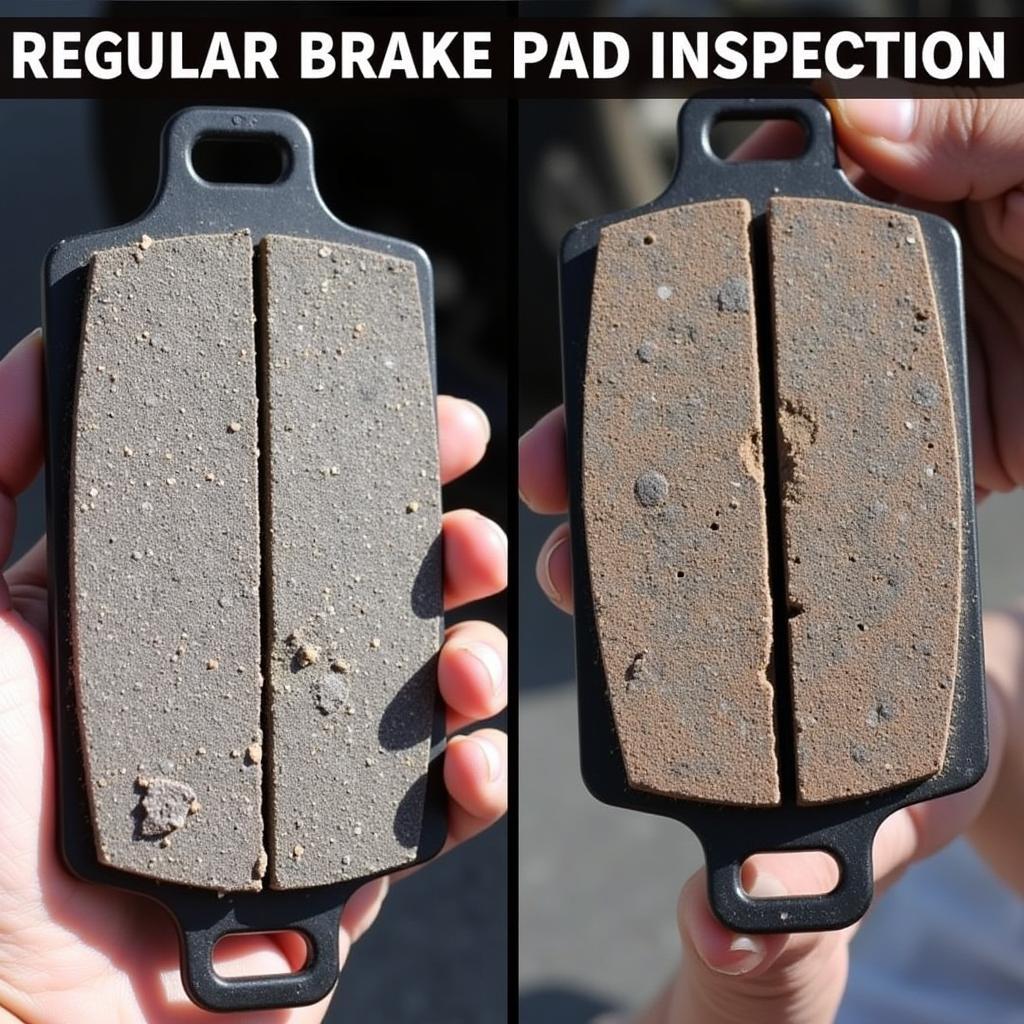The dreaded brake pad warning light on your Land Rover dashboard can be a cause for concern. Whether you’re driving a Discovery, Range Rover, or Defender, understanding what triggers this warning and how to address it is crucial for your safety and the longevity of your vehicle.
This comprehensive guide will delve into the common causes of the Land Rover brake pad warning light, walk you through potential solutions, and equip you with the knowledge to tackle this issue head-on.
What Triggers the Brake Pad Warning Light?
The brake pad warning light is a vital component of your Land Rover’s safety system. Its primary function is to alert you when your brake pads require attention. Here are the most common culprits:
-
Worn Brake Pads: This is the most frequent reason for the warning light. As you use your brakes, the friction material on the pads gradually wears down. When the pad thickness reaches a critically low level, the warning light illuminates, signaling the need for replacement.
-
Worn Brake Pad Sensor: Many Land Rover models are equipped with brake pad wear sensors. These sensors are typically small wires embedded within the brake pad material. When the pad wears down to a certain point, the sensor comes into contact with the brake rotor, completing a circuit and triggering the warning light.
-
Faulty Brake Pad Sensor: While designed for durability, brake pad sensors are not immune to malfunctions. Exposure to moisture, road debris, or general wear and tear can lead to sensor failure, causing a false warning light.
-
Low Brake Fluid Level: Though not directly related to brake pad wear, a low brake fluid level can also trigger the warning light in some Land Rover models. This is a serious issue, as it could indicate a leak in your braking system.
Troubleshooting the Land Rover Brake Pad Warning Light
Before you panic, it’s essential to approach the issue systematically. Here’s a step-by-step guide to help you diagnose and address the brake pad warning light:
-
Check Your Brake Fluid: Begin by inspecting the brake fluid reservoir. Ensure the fluid level falls within the “Min” and “Max” markings. If the level is low, there may be a leak in your braking system, requiring immediate attention from a qualified mechanic.
-
Inspect Your Brake Pads: If the brake fluid level is normal, the next step is to visually inspect your brake pads. You can usually assess the pad thickness through the spaces between the wheel spokes. If you’re unsure, it’s best to consult a professional.
-
Check for Brake Pad Sensor Damage: Examine the brake pad wear sensors for any signs of damage, such as cuts, fraying, or disconnections. If you identify any issues with the sensors, they will need to be replaced.
-
Consult a Qualified Mechanic: If you’re uncomfortable performing these checks yourself or suspect a more complex issue, it’s crucial to seek assistance from a qualified Land Rover mechanic. They have the expertise and specialized tools to diagnose and resolve the problem effectively.
How to Reset the Brake Pad Warning Light
In some cases, after replacing the brake pads or addressing the underlying issue, the warning light may remain illuminated. This typically requires a manual reset. While the process might vary slightly depending on your Land Rover model, here’s a general approach:
Note: Resetting the warning light without addressing the root cause can be dangerous. It’s crucial to ensure the underlying issue is resolved before attempting a reset.
-
Consult Your Owner’s Manual: Your Land Rover owner’s manual will provide specific instructions on resetting the brake pad warning light for your particular model.
-
Use a Diagnostic Tool: In certain models, you might need a specialized diagnostic tool to reset the warning light. These tools can be purchased online or at auto parts stores.
FAQs about Land Rover Brake Pad Warning Light
1. Can I Continue Driving with the Brake Pad Warning Light On?
It is highly discouraged to continue driving with the brake pad warning light on. Doing so compromises your safety and could lead to further damage to your braking system.
2. How Much Does it Cost to Replace Brake Pads on a Land Rover?
The cost of brake pad replacement varies depending on the Land Rover model, labor costs, and the type of brake pads used. On average, expect to pay between $150 to $400 per axle.
3. How Often Should I Replace My Land Rover’s Brake Pads?
Brake pad lifespan is influenced by driving style and conditions. However, it’s generally recommended to have your brake pads inspected every 10,000 miles and replaced when they reach a thickness of 3mm or less.
4. Can I Replace My Land Rover’s Brake Pads Myself?
While replacing brake pads is possible for those with mechanical experience, it’s generally recommended to have this procedure performed by a qualified mechanic. Brakes are a critical safety component, and improper installation can have serious consequences.
5. What are the Signs of Worn Brake Pads Besides the Warning Light?
Other indicators of worn brake pads include:
- Squealing or grinding noises when braking
- Vibration or pulsation in the brake pedal
- Pulling to one side when braking
- Increased stopping distance
Conclusion
Addressing the Land Rover brake pad warning light promptly is essential for your safety and the well-being of your vehicle. By understanding the common causes, following the troubleshooting steps, and seeking professional assistance when needed, you can ensure your Land Rover’s braking system remains in optimal condition for miles to come.

